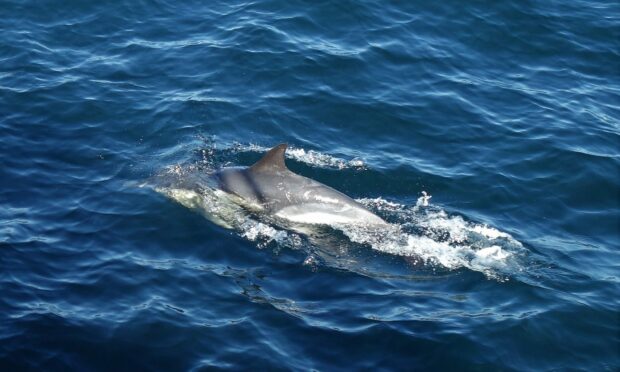The sea ahead frothed liked a bubbling urn from the splashes of the common dolphins as they frolicked in the mirror-calm water of the Minch, and in response, our boat immediately slowed to make a cautious final approach.
This was all about respecting nature and giving the dolphins a choice – if they wanted to continue hunting mackerel in the rich waters of outer Loch Broom, we would leave them in peace and go on our way, but if they preferred to play and gambol by the Shearwater Cruises’ vessel, then we would watch for a while.
Thankfully, the dolphins were in a boisterous mood and we were transfixed as they jumped around the boat and ploughed bubbly furrows in the clear blue water. There were calves in among the adult dolphins, and the gasps of amazement from the passengers were a joy to behold, for this was a coming together of nature and humanity.
The Minch is a hotspot for whales and dolphins (cetaceans), and this spellbinding encounter prompted me to find out more from cetacean enthusiast Steve Dodd from the Isle of Lewis, who is happy to admit he has an obsessive passion for these incredible animals.
He has been a volunteer with the Whale & Dolphin Conservation Shorewatch scheme since 2015 and helps run the Hebrides and NW Scotland cetacean sightings Facebook page.
He is fortunate in living close to Tiumpan Head on the east side of Lewis, which is regarded as one of the best places in the UK to see cetaceans from the shore. The most frequent species are minke whale, harbour porpoise, Risso’s, common and white-beaked dolphins, although other species are often glimpsed, including humpback and fin whales.
Steve told me: “Since 2020 there appears to be a pattern developing of humpback and fin whales arriving from the first week in June. On days when they stay in the area they are clearly feeding so I can only presume there are large quantities of prey items at these times. The number of sightings has also increased as there are more people out actively looking for cetaceans than in the past.”
The variety of whales and dolphins haunting the Minch is an encouraging sign that populations of some species are showing recovery after suffering the huge losses wreaked by whaling in the past.
Intriguingly, Steve has also spotted bluefin tuna in recent years. He says: “These fast-moving fish are not easy to spot and calm seas are required to observe small surface disturbances created by their quick movements. Occasionally this can lead them to leap clear of the surface in their pursuit of prey.”
Growing up to 3m in length, these spectacular fish are making a welcome return to Scottish waters following their loss in the 20th century. One of the fastest fish on the planet, it is wonderful once more to have bluefin tuna gracing our seas, providing a marvellous complement to the whales and dolphins that also frequent the silver-sparkled waters of the Minch.




Conversation